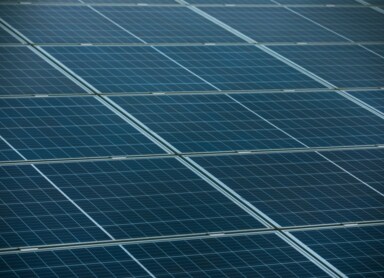Photovoltaics – Is It Worth It? Costs, Benefits, and Current Regulations
As of July 1, 2024, new prosumers are now settled under the net-billing system. Unlike the previously used net-metering, where surplus electricity could essentially be taken back on a 1:1 basis with a small commission deducted, the new system is based on specific monetary values.
Is solar-generated electricity still just as profitable under these new rules?
Is solar power worth It? How net-billing works
To answer the question of whether investing in solar power is still profitable, we first need to take a closer look at the net-billing system.
The operation of a photovoltaic (PV) micro-installation itself remains exactly the same as before.
In short, silicon cells generate direct current (DC) from sunlight, which is then converted by an inverter into alternating current (AC)—the type of electricity that can power machines or devices in a business, as well as household appliances and electronics.
How a PV system produces and uses energy
Solar panels produce electricity continuously whenever there is sunlight. Most of this energy is consumed directly to power the household or business network, but what happens to the surplus?
Excess energy is sent to the DSO (Distribution System Operator) grid and can be retrieved within the next 12 months.
This is where the key difference between net-metering and net-billing becomes clear.
Net-metering vs. net-billing
Under the old net-metering system, surplus electricity could be taken back on a near 1:1 basis, minus a small commission of 20% or 30% depending on the installation’s capacity.
In other words, the price of a kilowatt-hour at the time of delivery and retrieval didn’t matter.
In net-billing, it works differently.
Surplus energy is sold to the operator at a market-based price that changes regularly, and the money from the sale is credited to the prosumer’s virtual account.
When electricity demand exceeds production, the prosumer first uses the funds accumulated on this account to buy energy.
If the balance is insufficient, any additional energy must be purchased at the current market price, which is reflected in the electricity bill.
Limited cash withdrawals
A new feature of net-billing is the possibility of withdrawing cash from the prosumer’s virtual account.
However, this is tightly restricted to prevent active profit-making.
The withdrawal cannot exceed 20% or 30% of the value of electricity fed into the grid in a given month (Article 4, Section 11a of the Renewable Energy Sources Act).
How much does a kWh cost under net-billing?
At first glance, net-billing seems simple and logical, but it leaves users with one key question: How much does electricity actually cost?
This is determined by the RCEm—the monthly market price of electricity—defined in the Renewable Energy Sources Act (Art. 4b, Sec. 7).
It represents the volume-weighted next-day market price of electricity fed into the grid by prosumers.
The good news is that you don’t calculate it yourself.
The Energy Market Information Operator (Polskie Sieci Elektroenergetyczne, PSE) publishes the current RCEm price each month on its website.
Values may be slightly corrected if DSO data show measurement errors, but major differences are unlikely.
A recent amendment to the Renewable Energy Act introduced hourly settlement for energy surpluses fed into the grid after July 1, 2024.
In this case, RCEm will be calculated for the exact hour of production.
Profitability factors
Is solar still worth it under net-billing? The answer is: it depends—on several factors.
While prosumers cannot influence the RCEm price, they can take steps to increase their return:
-
Maximize self-consumption: The more energy you use as it is produced, the less you feed into the grid and the less exposed you are to price fluctuations.
-
Installing an energy storage system allows you to store excess power and use it when needed.
-
Businesses may invest in electric vehicle (EV) fleets and charging stations or use solar energy to power heat pumps.
-
-
Optimize installation efficiency:
- Choose high-quality panels and design the system to suit local conditions.
- Options include on-grid, off-grid, or hybrid systems, as well as power optimizers or microinverters to increase output.
-
Maintain the system:
- Clean panels regularly and remove snow.
- Schedule technical inspections to ensure all components operate correctly.
- Financial Support
Prosumers can still apply for subsidies under the Mój Prąd 6.0 program, offering up to 7,000 PLN for a PV system and up to 16,000 PLN for an energy storage system.
This is significant, especially as the cost of photovoltaic installations continues to fall.
Even under net-billing, a PV system can still pay for itself within a few years.
After that, electricity costs remain very low, while panel efficiency stays high for many years.
Key takeaways
-
Net-billing may seem less profitable than net-metering, but much of this is due to the system’s complexity.
-
Hourly settlements allow greater flexibility and real-time market response.
-
Electricity is no longer “free,” but a well-designed PV installation can still significantly cut energy costs.
-
Profitability depends largely on self-consumption levels and the quality of the equipment.
-
For businesses, the chosen electricity tariff (single-zone vs. two- or three-zone) can also strongly impact costs, especially for companies operating in shifts.
At REO.pl, we support businesses seeking to embrace green transformation.
If you need help with project planning or operational optimization, we can assist you.
Even if you don’t plan to install PV panels yourself, PPA agreements (Power Purchase Agreements) with a trusted provider using net-billing can lower operating costs and help meet ESG reporting requirements.






